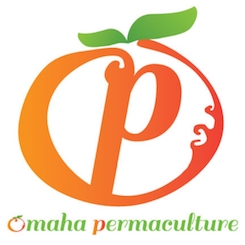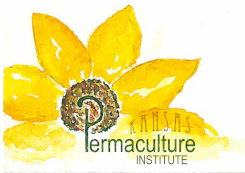En el verano de 2008, cuando estaba haciendo mi primer pedido de plantas para nuestro jardín de invierno, me encontré con un artículo llamado "tyfon" o "Holland greens". Estaba en la sección del catálogo de semillas de Territorial dedicada a cultivos de cobertura, y de hecho, cuando llegó el paquete de semillas decía "ABONO VERDE COMESTIBLE". ¡Qué apetitoso! Pero en la jerga agrícola, un "abono verde" es solo un cultivo de cobertura que mejora el suelo... varias fuentes dijeron que el tyfon podía ser consumido por personas y animales, así que lo pedí, junto con varios otros cultivos que Territorial prometió que eran resistentes al invierno.
¿Adivina qué? Ninguno de los otros cultivos era tan resistente al invierno como el tyfon. Era la última planta que producía hojas en otoño y la primera en brotar en primavera. Lo volví a plantar para el segundo invierno, que resultó ser mucho más brutal que el primero, y después de que el invernadero colapsara en nuestra tormenta de nieve del día de Navidad, las únicas dos plantas que sobrevivieron al invierno fueron el tifón y el diente de león. Además, Jessie y yo encontramos que las verduras eran apetecibles y versátiles, y para nuestra sorpresa, también ha sido nuestro cultivo más rentable y confiable en el mercado de agricultores. Así que aquí están algunas de las grandes cualidades del tifón:
- Sigue produciendo durante toda la temporada. Plántala en primavera u otoño: tendrás verduras todo el año, mucho después de que otras variedades de verduras hayan dejado de producir, así que si las vendes en el mercado a un dólar la bolsa, un paquete de semillas de 4 dólares puede pagarse fácilmente más de 10 veces. Cuando la planta finalmente se decide a espigar, las hojas se vuelven más suaves, más suculentas y menos peludas. También hay una raíz parecida a la del nabo, si te gusta ese tipo de cosas.
- Le gusta el suelo arcilloso pesado. La mayoría de los otros cultivos de invierno que planté ni siquiera germinaron en nuestro suelo. Kale, mâche... las estrellas del jardín de invierno se acobardaron, pero el tyfon estaba feliz.
- Tolera el hacinamiento. Los rábanos germinan bien en nuestro suelo, pero tienen que estar espaciados o simplemente se vuelven larguiruchos e inútiles. El tyfon crece felizmente junto a sus pares.
- Es resistente a las enfermedades. No me malinterpreten, los insectos se lo comen. Pero, aunque las hojas individuales tienen agujeros, la planta en sí se mantiene saludable. Todavía no he visto una planta de tyfon enferma.
- Es razonablemente apetecible y nutritiva. Nadie va a hablar maravillas del maravilloso sabor del tyfon por sí solo. Las hojas son mucho más suaves que las hojas de nabo, son básicamente como espinacas cocidas. Pero, como tales, absorben bien los sabores, por lo que puedes cocinarlas en salsa de soja o ramen o con tocino o cualquier sabor que te guste, y tienen un sabor excelente. Son un buen sustituto de las espinacas en lasaña y otras recetas: Jessie hizo un plato de pollo con verduras que se ganó los elogios de todos en una comida familiar compartida, y nadie adivinó que no eran espinacas. No recomiendo comer las hojas de tifón crudas, ya que son peludas.
- Mejora el suelo, en teoría. No es una legumbre, por lo que no aporta nitrógeno. Si lo arrancas en lugar de labrarlo al final de la temporada, la cantidad de materia orgánica que aporta se limitará a las raíces laterales, como cualquier otro cultivo. Por lo tanto, personalmente, no cuento con que mejore el suelo.
Quería compartir sobre este cultivo porque nadie lo conoce, y realmente ha salvado nuestro jardín de la mediocridad. ¡Prueba el tyfon!
(Descripción anterior publicada originalmente en https://www.blueboathome.com/house/praise_tyfon_king_greens , copiada aquí por el autor.)




